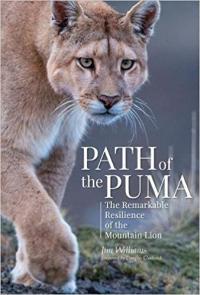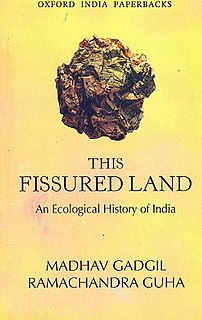 W
WBetween Pacific Tides is a 1939 book by Edward F. Ricketts and Jack Calvin that describes the intertidal ecology of the Pacific coast of the United States, Canada, and Mexico. The book was originally titled "Between Pacific Tides: An Account of the Habits and Habitats of Some Five Hundred of the Common, Conspicuous Seashore Invertebrates of the Pacific Coast Between Sitka, Alaska, and Northern Mexico".
 W
WBraiding Sweetgrass: Indigenous Wisdom, Scientific Knowledge, and the Teachings of Plants is a 2013 nonfiction book by Robin Wall Kimmerer and published by Milkweed.
 W
WThe California Field Atlas is a 2017 book written and illustrated by Obi Kaufmann. It was published by Heyday Books, a Berkeley-based nonprofit small press. Through passages of nature writing and hundreds of watercolor paintings, the book details California's ecology and geography. Kaufmann, an artist and outdoorsman, was born in California and currently resides in Oakland. He prepared the book over the course of a year, drawing from a lifetime of experience hiking thousands of miles of California wilderness. With the California Field Atlas, he intended to foster geological literacy and conservation of the state's natural environment.
 W
WChanges in the Land: Indians, Colonists and the Ecology of New England is a 1983 nonfiction book by historian William Cronon.
 W
WEcological Genetics is a 1964 book by the British biologist E. B. Ford on ecological genetics. Ford founded the field and it is considered his magnum opus. The fourth and final edition was published in 1975.
 W
WEcology: From Individuals to Ecosystems is a 2006 higher education textbook on general ecology written by Michael Begon, Colin R. Townsend and John L. Harper. Published by Blackwell Publishing, it is now in its fourth edition. The first three editions were published by Blackwell Science under the title Ecology: Individuals, Populations and Communities. Since it first became available it has had a positive reception, and has long been one of the leading textbooks on ecology.
 W
WThe Forest Unseen: A Year's Watch in Nature is a 2012 book written by David G. Haskell.
 W
WThe Formation of Vegetable Mould Through the Action of Worms, with Observations on their Habits is an 1881 book by Charles Darwin on earthworms. It was his last scientific book, and was published shortly before his death. Exploring earthworm behaviour and ecology, it continued the theme common throughout his work that gradual changes over long periods of time can lead to large and sometimes surprising consequences. It was the first significant work on soil bioturbation, although that term was not used by Darwin.
 W
WThe Future Eaters in a 1994 non-fiction book by Australian author Tim Flannery. The book is an ecological history of Australia entailing how humans consume the resources they need for their future, and looking at the journey of the Aboriginal Australian people from Africa to the Australian mainland. Flannery's thesis has both been applauded and disagreed with.
 W
WHalf-Earth: Our Planet's Fight for Life is a 2016 book by the biologist E. O. Wilson, in which the author proposes that half of the Earth's surface should be designated a human-free natural reserve to preserve biodiversity. Wilson noted that the term "Half-Earth" was coined for this concept by Tony Hiss in his Smithsonian article "Can the World Really Set Aside Half the Planet for Wildlife?"
 W
WOf Moths and Men is a book by journalist Judith Hooper about the Oxford University ecological genetics school led by E.B. Ford. The book specifically concerns Bernard Kettlewell's experiments on the peppered moth which were intended as experimental validation of evolution. She highlights concerns about the methodology of Kettlewell's experiments and suggests that these issues could invalidate the results obtained, ignoring or disparaging evidence supporting natural selection while repeatedly implying that Kettlewell and his colleagues committed fraud or made careless errors. Subject matter experts have described the book as presenting a "conspiracy theory" with "errors, misrepresentations, misinterpretations and falsehoods".
 W
WParasite Rex: Inside the Bizarre World of Nature's Most Dangerous Creatures is a nonfiction book by Carl Zimmer that was published by Free Press in 2000. The book discusses the history of parasites on Earth and how the field and study of parasitology formed, along with a look at the most dangerous parasites ever found in nature. A special paperback edition was released in March 2011 for the tenth anniversary of the book's publishing, including a new epilogue written by Zimmer. Signed bookplates were also given to fans that sent in a photo of themselves with a copy of the special edition.
 W
WPath of the Puma: The Remarkable Resilience of the Mountain Lion, by Jim Williams, is a non-fiction book presenting the research of the author, a wildlife biologist and supervisor for Montana Fish, Wildlife and Parks' Region 1 in Kalispell. Williams also discusses DNA research conducted by others on these animals, and makes the case for coexistence with these big, wild cats.
 W
WThe Prairie Keepers: Secrets of the Zumwalt is a 1995 book by American wildlife biologist Marcy Cottrell Houle. The book documents Houle's experience studying the unusually prevalent amount of raptors on the Zumwalt Prairie while researching for Oregon State University with a grant from the U.S. Fish and Wildlife Service in 1979.
 W
WReflections in Bullough's Pond: Economy and Ecosystem in New England is a book by Diana Muir. The Providence Journal called Bullough’s Pond "a masterpiece," and Publishers Weekly called it "lyrical". The Massachusetts Center for the Book awarded the 2001 Massachusetts Book Award to Bullough's Pond for the author’s "engaging and accomplished storytelling."
 W
WThe Sixth Extinction: An Unnatural History is a 2014 non-fiction book written by Elizabeth Kolbert and published by Henry Holt and Company. The book argues that the Earth is in the midst of a modern, man-made, sixth extinction. In the book, Kolbert chronicles previous mass extinction events, and compares them to the accelerated, widespread extinctions during our present time. She also describes specific species extinguished by humans, as well as the ecologies surrounding prehistoric and near-present extinction events. The author received the Pulitzer Prize for General Non-Fiction for the book in 2015.
 W
WThe Theory of Island Biogeography is a 1967 book by the ecologist Robert MacArthur and the biologist Edward O. Wilson. It is widely regarded as a seminal piece in island biogeography and ecology. The Princeton University Press reprinted the book in 2001 as a part of the "Princeton Landmarks in Biology" series. The book popularized the theory that insular biota maintain a dynamic equilibrium between immigration and extinction rates. The book also popularized the concepts and terminology of r/K selection theory.
 W
WThis Fissured Land: An Ecological History of India is a book by Madhav Gadgil and Ramachandra Guha on the ecological history of India. It examines 'prudent' (sustainable) and 'profligate' (unsustainable) use of natural resources, and their effects. It describes the ecological history of India, from the first humans, through the ages of hunter-gatherers, farmers, empires and the British Raj.
 W
WTurtle Island is a book of poems and essays written by Gary Snyder and published by New Directions in 1974. Within it, Snyder expresses his vision for humans to live in harmony with the earth and all its creatures. The book was awarded the Pulitzer Prize for Poetry in 1975. "Turtle Island" is a name for the continent of North America used by many Native American tribes.
 W
WThe Vegetarian Myth: Food, Justice, and Sustainability is a 2009 book by Lierre Keith. Keith is an ex-vegan who believes veganism has damaged her health and others'. Keith argues that agriculture is destroying not only human health but entire ecosystems, such as the North American prairie, and destroying topsoil. Keith also considers modern agriculture to be the root cause of slavery, imperialism, militarism, chronic hunger and disease.